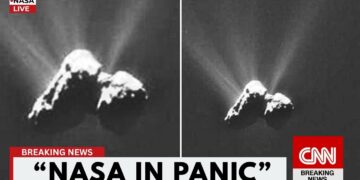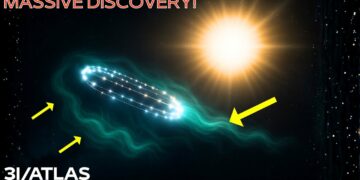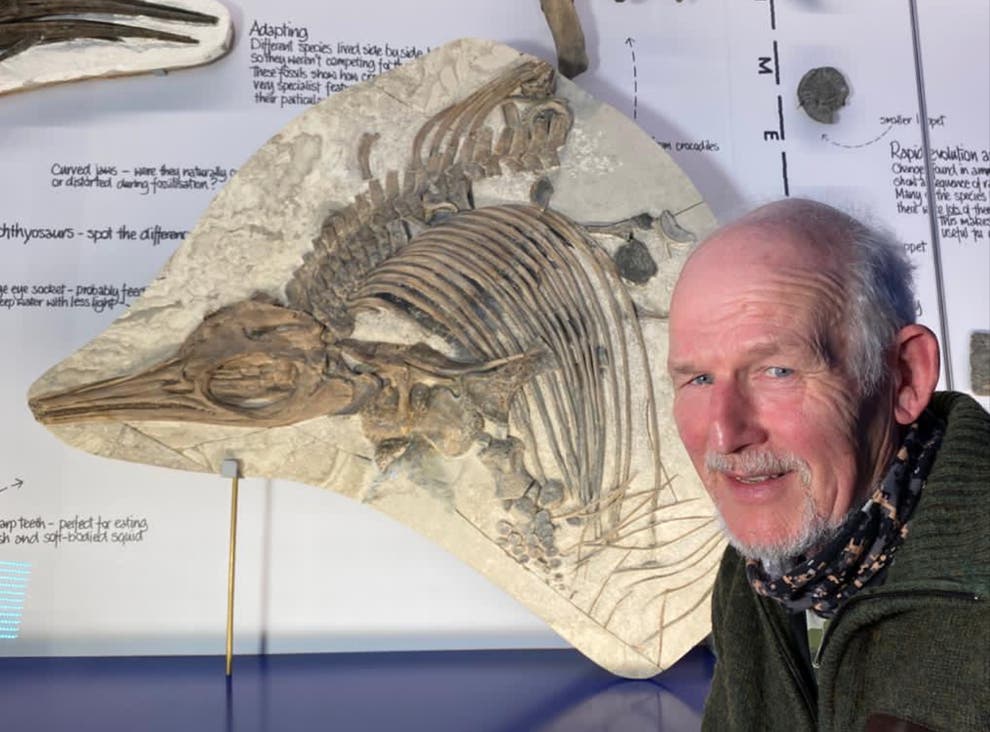Imagine gazing into the vastness of the universe and realizing it might be gazing back. The James Webb Space Telescope, humanity’s most advanced observatory, has uncovered phenomena that challenge our understanding of the cosmos. These discoveries are not just stunning images of distant galaxies or nebulae but signals, patterns, and anomalies that defy known cosmic rules, hinting at something deliberate—perhaps even intelligent.
A Puzzling Anomaly at Neptune
The journey began close to home, with Webb’s observations of Neptune, the distant ice giant. Compared to data from Voyager 2’s 1989 flyby and recent Earth-based telescopes, Webb revealed a significant drop in Neptune’s upper atmosphere temperature—nearly 10°C in just a few decades. No known cause, such as solar cycles or internal heat fluctuations, explains this cooling. More unsettling, Webb detected subtle shifts in Neptune’s magnetosphere, like a faint pulse from an unknown source. Could an external force, like a gravitational anomaly or dark matter shift, be at play? Or is something stranger influencing the planet across vast distances?
Oceans and Life in the Trappist-1 System
Further afield, Webb turned its gaze to the Trappist-1 system, 39 light-years away, known for its seven rocky planets. Infrared spectroscopy revealed water vapor in the atmospheres of Trappist-1d and 1e, suggesting dense, humid atmospheres with possible Earth-like cloud systems. The data points to global oceans—deep, stable, and ancient. Even more striking, Webb detected ozone-like compounds, molecular markers often tied to biological processes on Earth. While not definitive proof of life, these findings mark the closest we’ve come to identifying habitable conditions on not one, but two planets in a single system.
A Glimpse into the Early Universe
Webb’s deep survey of JADES-GS-z13-0, a galaxy formed just 330 million years after the Big Bang, revealed an anomaly in its Lyman-alpha radiation. This frequency, typically absorbed by neutral hydrogen in the early universe, was unexpectedly strong and clear, suggesting premature ionization. This challenges our understanding of the epoch of reionization, hinting at an unknown force—natural or artificial—that accelerated the process. Could this be evidence of early galactic engineering or an unidentified energy source?
Planets Defying Stellar Death
In the WD1856+534 white dwarf system, Webb found a massive gas planet orbiting a dead star, defying expectations. White dwarfs typically destroy nearby objects, yet this planet remains intact, with signs of atmospheric regeneration—vaporized water, sulfur compounds, and other chemical markers. This suggests planets can adapt to survive a star’s death, raising questions about life persisting in extreme conditions. Could civilizations or ecosystems thrive around dying stars, sustained by alternative energy sources?
Active Moons in Our Solar System
Webb’s infrared mapping of the outer moons of Uranus and Neptune, like Hippocamp and Despina, revealed unexpected thermal signatures and complex carbon compounds. These small, frozen satellites, thought to be geologically dormant, show signs of cryovolcanic or geological activity. Theories range from radioactive decay to tidal heating, but the organized nature of the compounds suggests an external influence. Could these moons be relics of an ancient process?
A Mysterious Signal from Messier 82
In the starburst galaxy Messier 82, Webb detected a repeating infrared pulse from its core, with mathematical precision resembling artificial modulation. Unlike natural phenomena like spinning neutron stars, this signal lacks matching visible or X-ray signatures. Some scientists speculate it could be the remnant of an ancient transmission, not intended for us but intercepted by chance.
Revisiting Tabby’s Star
Webb’s observations of KIC8462852, or Tabby’s Star, deepened its mystery. The star’s unpredictable dimming is caused by thin, opaque, geometrically consistent objects—possibly massive, flat structures orbiting in layers. Thermal sensors also detected waste heat, suggesting energy harvesting. While natural explanations like unusual ring systems remain, the idea of a Dyson swarm is gaining traction as a serious hypothesis.
Shadows in Pandora’s Cluster
In the Pandora’s Cluster (Abell 2744), Webb observed shadows crossing a background galaxy during long exposures. These occultations, caused by invisible, non-reflective objects, suggest massive, dark structures—perhaps stealth satellites or exotic megastructures. Their organized movement challenges our understanding of cosmic physics.
A Universe That Watches Back
The James Webb Space Telescope is unveiling a universe that feels less empty and more aware. From Neptune’s strange pulses to Trappist-1’s potential oceans, from ancient galaxies to enduring planets, these discoveries whisper a profound question: What if we’re not alone? Each finding peels back a cosmic veil, revealing a universe that may have been observing us all along. As we stand on the brink of redefining our place in the cosmos, the journey is just beginning.























